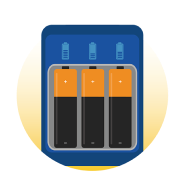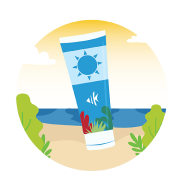There are two official languages in the Philippines—Filipino and English. Filipino which is based on Tagalog, is the national language. English is also widely used and is the medium of instruction in higher education. There are also eight (8) major languages spoken by majority of the Filipinos: Tagalog, Cebuano, Ilocano, Hiligaynon or Ilonggo, Bicol, Waray, Kapampangan, and Pangasinense.
Filipino is the native language which is used nationally as the language of communication among ethnic groups. Like any living language, Filipino is in a process of development through loans from Philippine languages and non-native languages for various situations, among speakers of different social backgrounds, and for topics for conversation and scholarly discourse.
Water supply in Metro Manila and in all the other major cities are considered potable. Bottled purified water, spring water or mineral water is often supplied by hotels and resorts, and sold in all grocery stores.
The Philippines generally uses the metric system in most trade and legal transactions. Inches, feet and yards (for textiles) are common in everyday use for measuring things.
The supply voltage in the Philippines is 220 volts. 110 volts alternating current is also used especially in major hotels.
If the appliance is single voltage rated, it will need to operate on the same voltage as the supply voltage of the country e.g. 220 volts.
Since the Philippines is a tropical country, where temperature can get humid, it is advisable to wear light and loose clothing. White and light colors are perfect as they reflect the heat. Try your dark-colored tops at night for a more refreshing feeling. Having a basic classic white tee is also strongly recommended.
The men’s national costume is called a Barong Tagalog–a formal garment often made from thin fabric (piña or abaca) and is richly embroidered. It can be used by both men and women and it looks like a tunic or shirt with long sleeves and is worn over a usual shirt. If you must attend any occasion which would require a suit and a tie, the Barong Tagalog is a wonderful substitute, usually worn with a Chinese collarless shirt called camisa de chino.
The Philippine Peso (sign: ₱; code: PHP) is the official currency in the country. 100 centavos or sentimos make up 1 peso.
Foreign currency may be exchanged at your hotel, and in most of the large department stores, banks and authorized money changing shops. Exchanging money anywhere else is illegal and the laws are strictly enforced.
Most large stores, restaurants, hotels, and resorts accept major credit cards including American Express, Visas, and MasterCard. Traveler's Checks preferably American Express are accepted at hotels and large department stores. Personal checks drawn on foreign banks are generally not accepted.
The best currency to take when in the Philippines is the local peso.
Most businesses are open from 8:00 AM to 5:00 PM from Monday to Friday and 8:00 AM until noon on Saturdays. Banks are open from 9:00 AM until 3:00 PM from Mondays through Fridays. When doing your bank transaction, it is advisable to have your passport with you for identification.
No employee in the Philippines must work for over 8 hours a day. An employee is worthy of a 1-hour lunch break daily, without fail. However, a worker is only required to work for a maximum of 8 hours per day from the office. There are no laws that mandate his working hours from home.
Post offices are open from 9:00 AM to 5:00 PM on weekdays only. Stamps for postcards are frequently available from the Concierge Desk at most major hotels. The Philippines uses ZIP codes, please include them in addressing local mail.
NOTE: The Standard lunch hour is from 12 noon to 1:00 PM.
The local time in the Philippines is GMT +8 hours. The country has only one time zone–Philippine Time (PHT)–which is 8 hours ahead of Coordinated Universal Time (UTC).
The first half of the year, from January to May, is the best time to visit the country. November to February is cool, while March to May is hot and dry. June to October is rainy, with the months between July and September characterized by typhoons. Average temperature is 78 degrees F/25 degrees C; average humidity is 77%. Some parts of the country such as Cebu, are warm and comfortable in all seasons and can be visited throughout the year.
For up-to-date weather information, visit the Philippine Atmospheric, Geophysical and Astronomical Services Adminstration (PAGASA)
The major cultural agencies of government are the Cultural Center of the Philippines, the National Historical Institute, the National Museum, The National Library, the Records Management and Archives Office, and the Commission on the Filipino Language. The Heads of these cultural agencies are all ex-officio members of the NCCA Board and all except the Commission on the Filipino Language are together under the National Commission on Culture and Arts.
The Filipino is basically of Malay stock with a sprinkling of Chinese, American, Spanish, and Arab blood. The Philippines has a population of 76.5 million as of May 2000, and it is hard to distinguish accurately the lines between stocks. From a long history of Western colonial rule, interspersed with the visits of merchants and traders, evolved a people of a unique blend of east and west, both in appearance and culture.
The Filipino character is actually a little bit of all the cultures put together. The bayanihan or spirit of kinship and camaraderie that Filipinos are famous for is said to be taken from Malay forefathers. The close family relations are said to have been inherited from the Chinese. The piousness comes from the Spaniards who introduced Christianity in the 16th century. Hospitality is a common denominator in the Filipino character and this is what distinguishes the Filipino. Filipinos are probably one of the few, if not the only, English-proficient Oriental people today. Pilipino is the official national language, with English considered as the country's unofficial one.
The Filipinos are divided geographically and culturally into regions, and each regional group is recognizable by distinct traits and dialects - the sturdy and frugal llocanos of the north, the industrious Tagalogs of the central plains, the carefree Visayans from the central islands, and the colorful tribesmen and religious Moslems of Mindanao. Tribal communities can be found scattered across the archipelago. The Philippines has more than 111 dialects spoken, owing to the subdivisions of these basic regional and cultural groups.
The country is marked by a true blend of cultures; truly in the Philippines, East meets West. The background of the people is Indonesian and Malay. There are Chinese and Spanish elements as well. The history of American rule and contact with merchants and traders culminated in a unique blend of East and West, both in the appearance and culture of the Filipinos, or people of the Philippines.
Hospitality, a trait displayed by every Filipino, makes these people legendary in Southeast Asia. Seldom can you find such hospitable people who enjoy the company of their Western visitors. Perhaps due to their long association with Spain, Filipinos are emotional and passionate about life in a way that seems more Latin than Asian.
The Spaniards introduced Christianity (the Roman Catholic faith) and succeeded in converting the overwhelming majority of Filipinos. At least 83% of the total population belongs to the Roman Catholic faith.
The American occupation was responsible for teaching the Filipino people the English language. The Philippines is currently the third-largest English speaking country in the world.
Historically, the Filipinos have embraced two of the great religions of the world - Islam and Christianity. Islam was introduced during the 14th century shortly after the expansion of Arab commercial ventures in Southeast Asia. Today, it is limited to the southern region of the country.
Christianity was introduced as early as the 16th century with the coming of Ferdinand Magellan in 1521.
Protestantism was introduced by the first Presbyterian and Methodist missionaries who arrived with the American soldiers in 1899.
Two Filipino independent churches were organized at the turn of the century and are prominent today. These are the Aglipay (Philippine Independent Church) and the Iglesia Ni Kristo (Church of Christ) founded in 1902 and 1914, respectively. Recently the Aglipay signed a covenant with the Anglican Church. The Iglesia ni Kristo has expanded its membership considerably. Its churches, with their unique towering architecture, are landmarks in almost all important towns, provincial capitals, and major cities.







